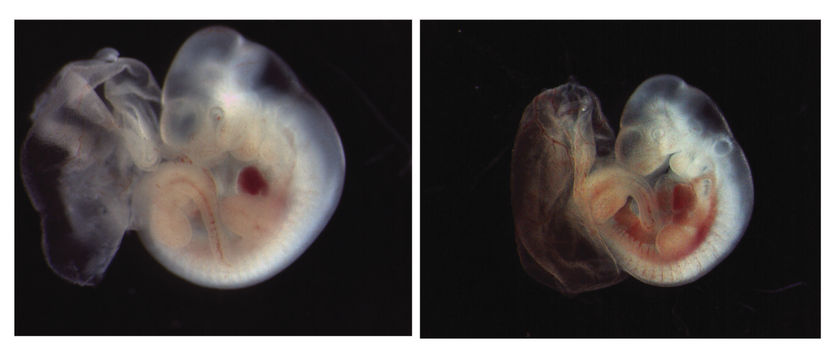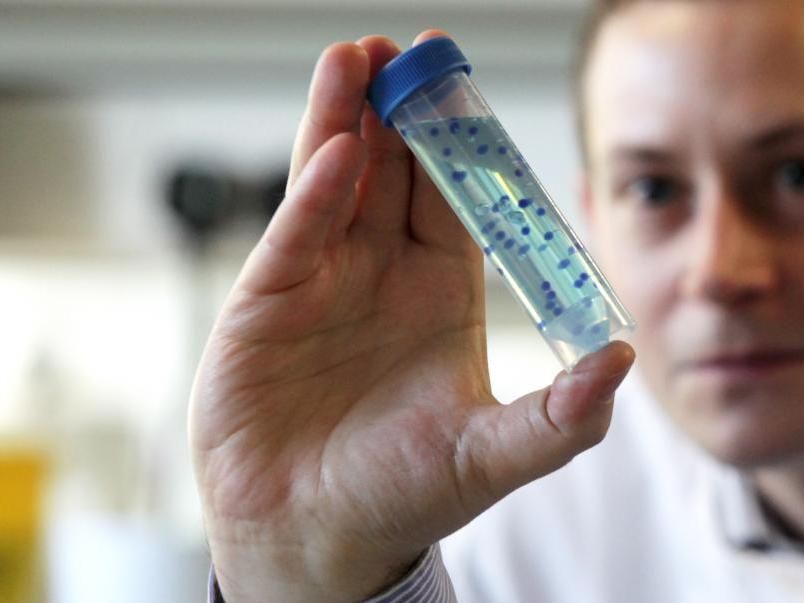Functions of the Alzheimer Key Protein APP
Second funding period: DFG funds research group headed by Heidelberg scientist Prof. Dr. Ulrike Müller
The interdisciplinary transregional research group “Physiological Functions of the APP Gene Family in the Central Nervous System” will continue its work for another three years. The German Research Foundation (DFG) has approved a second funding period involving a total of EUR 1.8 million. The research group established in 2010 is coordinated by Prof. Dr. Ulrike Müller from the Institute of Pharmacy and Molecular Biotechnology at Heidelberg University. In addition to the Heidelberg team, scientists from Braunschweig, Frankfurt, Kaiserslautern and Mainz. are jointly studying the APP protein, which plays a key role not only in the pathogenesis of Alzheimer’s disease, but also in the communication of nerve cells in the brain of healthy people. The focus is on the influence of this protein on learning and memory processes, and on acquiring a better understanding of APP functions, in order to be able to develop new treatments for Alzheimer’s.
Alzheimer’s disease is triggered by deposits of insoluble protein aggregates forming “plaques” in the vicinity of nerve cells in the brain. These plaques are mainly composed of the ß-amyloid peptide, which damages the nerve cells until they die. This small protein is derived via proteolysis from a much larger precursor, the amyloid precursor protein APP. As Prof. Müller explains, the normal cell biological and physiological functions of APP and its proteolytic products are hitherto largely unknown. And yet APP is produced in almost all brain cells, particularly in regions important for memory formation. The aim of this research network with its interdisciplinary approach is to gain a better understanding of the physiological functions of APP, from the molecular level to its role in the intact nervous system. The scientists also want to find out what role APP and related proteins play in preventing damage to nerve cells or fostering their regeneration.
The research group “Physiological functions of the APP gene family in the central nervous system” consists of five teams of scientists from the universities of Heidelberg, Frankfurt and Mainz, and the Technical Universities of Kaiserslautern and Braunschweig. The Heidelberg projects will receive a total of EUR 950,000 in funding. Two Bioscience research groups from Heidelberg University are involved: Prof. Müller’s team is analysing the role of the APP gene family in the central nervous system using genetically modified mouse models. In a joint project with Dr. Andreas Vlachos and Prof. Dr. Thomas Deller from Frankfurt University, Prof. Müller is investigating the role of APP in functional adaptation processes for maintaining neuronal circuits. At Heidelberg University’s Biochemistry Center the research group headed by Dr. Klemens Wild is examining the three-dimensional structure of APP by means of X-ray structural analysis. At the Heidelberg Medical Faculty, Prof. Dr. Andreas Draguhn’s team is studying the role of APP for synaptic communication in neuronal networks. These projects are based at the Institute of Physiology and Pathophysiology.
Most read news
Topics
Organizations
Other news from the department science

Get the life science industry in your inbox
By submitting this form you agree that LUMITOS AG will send you the newsletter(s) selected above by email. Your data will not be passed on to third parties. Your data will be stored and processed in accordance with our data protection regulations. LUMITOS may contact you by email for the purpose of advertising or market and opinion surveys. You can revoke your consent at any time without giving reasons to LUMITOS AG, Ernst-Augustin-Str. 2, 12489 Berlin, Germany or by e-mail at revoke@lumitos.com with effect for the future. In addition, each email contains a link to unsubscribe from the corresponding newsletter.
Most read news
More news from our other portals
Last viewed contents
Oparin_Medal

Insights into a versatile molecular death switch - The enzyme caspase-8 regulates different modes of cell death
Cranial_electrotherapy_stimulation
American_Academy_of_Disaster_Medicine
Will_Kirby



















































